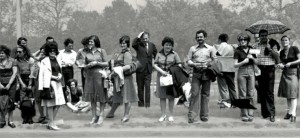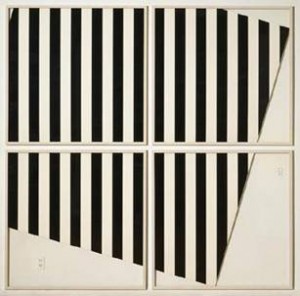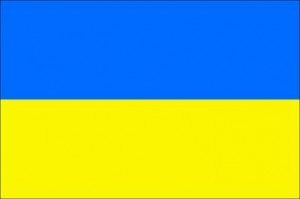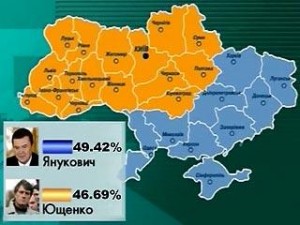Introduction
“Europoly” is a game that mimics “Monopoly,” the world-famous board game. Since its debut in 1935, approximately 750 million people all over the world have played the game. “Monopoly” is named after an economic concept predominant in the early 20th century, the domination of a market by a single seller.
The artist who came up with the idea of “Europoly” in the early 21st century is Dejan Kaludjerovic, born in Belgrade, the capital of former Yugoslavia and now the capital of Serbia-Montenegro. Currently, Kaludjerovic lives in Vienna and works as an artist, but also as a foreigner; as, that is a non-EU citizen.
What does it mean to be born in and to live in Europe as a non-EU citizen? What does it mean to live in a capitalist country as a person who grew up in the country of “socialism of self-management”?
Flow of Capital Destroyed the Integrity of the Former Yugoslavia
After World War II, Europe was divided into spheres of Eastern communism and Western capitalism. In this situation, so-called Central Europe was also divided into East and West by the Iron Curtain. However, after the corruption and collapse of communism, capitalism became the only dominant economic system.
The artist Dejan Kaludjerovic has been curious about these transitions, since he grew up in Tito’s good old Yugoslavia. His interest in Tito’s Yugoslavia appears in his monumental early painting “Waiting for the Man,” which shows enthusiastic Yugoslav people in 1977 waiting for Tito’s return from Korea.
The artist is quite sensitive to issues involving the flow of capital, as shown by the title “Europoly”. In fact, one of the main causes of the corruption of the former Yugoslavia was the abrupt flow of capital from the West. This flow of capital was mostly limited to western regions such as Slovenia and Croatia. After the death of Tito, who had tried to equally distribute wealth among all the different regions, differences in income widened. In 1988, not long before war broke out, per-capita income in Slovenia, the richest area (144,330,000 Dinars = $6,141) was 8.2 times that of the poorest part of the country, Kosovo (17,500,000 Dinars = $744).[1]
These differences of income caused an upsurge of nationalism. Some nationalistic politicians stirred the people’s lust for nationalism under the regime of a free-market economy, and used this nationalism to fortify their own politically firm positions inside the nation. This thoughtless idea to use nationalism as a tool to control the nation caused political turmoil. As a result, the ideal of communism, which had created Yugoslav identity as a nation, was cast aside, and a bloody war ensued.
After the break-up of the former Yugoslavia, some republics are becoming part of EU, such as Slovenia, which is already approved as a EU member, and Croatia, which is in a process of becoming a new member of EU, but not Serbia-Montenegro, the land of the artist’s birth. Serbia became a scapegoat by NATO to stop the war in Yugoslavia, and it endured aerial bombing by NATO.[2]
Independence of Croatia and the Role of Christianity
The primary difference that distinguished the ethnic groups of Yugoslavia (which means “Land of South Slavs”) was religion. The Serbs, Macedonian Slavs, and Montenegrins were traditionally Orthodox Christians, whereas the Croats and Slovenes were Roman Catholics. The Muslim Slavs and Albanians were primarily Sunni Muslims. In the 1953 census, 42 percent of Yugoslavia’s population declared Orthodox Christianity as their religion, 32 percent declared Roman Catholicism, 12 percent declared Islam, 1 percent identified themselves as Protestants, 1 percent declared some other form of Christianity, and 12 percent said they had no religious affiliation.[3]
Slovenia and Croatia, which had blamed “exploitation” by the poor south, asserted their independence from Yugoslavia. Both Croatia and Slovenia declared themselves independent states on June 25, 1991. In the world of capitalism, there is no merit in keeping the country together since poor areas cannot share the capital with richer ones. Furthermore, serious economic depression and hyper-inflation, which was 2665% annually in 1989, propelled movements for independence.[4] Croats also had a long historical feud with Serbs. Furthermore, in Slovenia, 87.6% of the total population is Slovenian, so compared with other areas in Yugoslavia it is not very mixed and its people felt compelled to declare the region’s independence.
Under Socialism, people do not care about differences in religion, since the system of socialism itself does not rely on differentiation. However, the independence of Croatia is deeply related to the difference of religion and its role with Western Europe.
The story of Yugoslavia’s disintegration and the resulting war was hastened along by German recognition of Croatia’s independence in 1991. There was historical sympathy between Germany and Croatia, mainly due to the influence of Bavarian Roman Catholicism, the relationship between Germany and its puppet Ustashe during World War II, and the fact that two-thirds of Yugoslavian immigrants in Germany are Croatian. Also, there has been antipathy toward Serbia in Germany stemming from historical events such as the assassination of Archduke Ferdinand in 1914 by Gavrilo Princip, a young Bosnian Serb who believed in the Yugoslav idea, and the Partisan resistance against Germany by Tito during World War II. Such historical background informed the decision of German foreign minister Hans Dietrich Genscher to recognize the independence of Slovenia and Croatia.
Flag of EU and Catholicism – Europe as a Union of Christianity
As mentioned above, the nationalism of Croatia, which differentiates the roots of Croat and Serb, was based on the difference of religion that came out of the Great Schism. In Europe, religion still functions as a tool to identify nationality, and it was also used to create the European Union.
The current EU flag has twelve yellow stars. People assumed that the number of stars would increase when new members joined the European Union. However, there remained twelve stars even after new members joined. Why?
The flag design, twelve yellow stars on a blue background, was designed by Arsene Heitz, who lived in Strasbourg. A Catholic-oriented newspaper in Rome, Zenit, pointed out that at the time he designed the flag, Arsene Heitz was reading the history of the Blessed Virgin’s apparitions in Paris’ Rue du Bac, appearances in which she is called the Virgin of the Miraculous Medal. The designer explained that the circle of twelve stars on a blue background had appeared in traditional iconography representing the image of the Immaculate Conception.[5]
This flag design was chosen as an official design on December 8, 1955. In the Catholic Church’s calendar, December 8 is the Feast of the Immaculate Conception, and generally this date is a Holy Day of Obligation and a public holiday in countries where Catholicism is predominant.[6]
Therefore, we can see the strong intention to represent the European Union as quite a Catholic, or at least Christian-oriented organization. Interestingly enough, the flag of Bosnia-Herzegovina, which was “saved” by NATO intervention, has a similar design.
On the other hand, Rem Koolhaas designed a new, striped EU flag by combining all the different stripe colors of countries in the EU. The design shows the unique structure of Europe, but it was not officially recognized as an EU flag. One of the reasons why Koolhaas came up with this idea is that he grew up in Indonesia, outside of Europe. Inside of Europe, Daniel Buren is one of the rare artists who found this structure and sublimated it to the level of conceptual art.
“The Rotating Square – In and Out of the Frame” 1989
In fact, Koolhaas’s EU flag shows the unique composition of Europe. These stripe flags, uncommon in non-Christian countries, clearly exhibit inclination toward Euclidian Geometry of symbols of Europe.
René Descartes, founder of Modern Philosophy, started his thinking from self-recognition, expressed in his well-known sentence, “Cogito ergo sum.” In other words, the impossibility of absolute certainty in the existence of self is the beginning of his philosophy, and it is also, by putting the self at the crosses of coordinates, at the core of the Cartesian coordinate system. Descartes’ philosophy was enormously influenced by Christianity, which, in its Counter-Reformation manifestation, was predominant in his childhood.
Cartesian Coordinate System and Its Relationship to Ukraine’s Orange Revolution and the Independence of Croatia
By using the Cartesian coordinate system, we can analyze the function of democracy and its relationship with media, Christianity, and the current function of capitalism. I want to discuss this by citing the case of Ukraine’s Orange Revolution and the independence of Croatia.
Basically, current democratic systems work through majority voting. To win an election, you need to get a majority. In other words, the winner of the median voter is a winner of the election. Moreover, this instance is exemplified by using the Cartesian coordinate system.
To understand this, the case of the U.S. Presidential election of George W. Bush and Al Gore in 2000 is helpful. The candidates – conservative Bush (right wing), liberal Gore (left wing), the most conservative Pat Buchanan (ultra right wing) and the most liberal Ralph Nader (ultra left wing) – can be given places in a Cartesian coordinate system. The winner of the election was George W. Bush, and one of the main reasons for his victory is that he shifted his policy close to a moderate stance, and generally won the median voter. Also the most liberal candidate, Nader, got 3%, taken overwhelmingly from the likely votes of Democrats, and it brought Bush’s victory. If Nader was not in the election, this 3% goes to Gore, and he is elected as the new president. The winner of democracy is a winner of the median voter, and this theory is called the median voter theorem.
In case of Ukrainian presidential election, the whole country was divided from East and West; the pro-Russian eastern bloc, which speaks Russian and is Eastern Orthodox, supported Yanukovych, and the pro-Western Europe western bloc, which speaks Ukrainian and is Roman Catholic, supported Yushchenko. This division was quite similar to the situation of Croatia when it declared independence; Croatia was a western part of the former Yugoslavia, whose people are largely Roman Catholic and speak Serbo-Croatian using roman characters, supported Franjo Tudjman. Ironically, this division in Ukraine appeared as a clear stripe image analogous to its geographical situation.
In the grand scheme of things, Ukraine wants to join NATO and, ultimately, the European Union. To realize this, Ukraine should be outside of Russian influence, since Western Europe dislikes the influence of Russia in Europe. At the same time, Western Europe tries to divide the Slavic nations, since if the Slavic nations unite, they would make up the majority of Europe. If this happens, Western Europe cannot control the decision of Europe as a whole, since majority voting is about median voters, and median voters will be those of Slavic nations.
Western side watchdog organizations such as IRI (The International Republican Institute) in the United States and OSCE (Organization for Security and Co-operation in Europe) in Western Europe reported illegal election campaigning on Yanukovych’s part that ended in his reelection. However, BHHRG (The British Helsinki Human Rights Group) mentions that there is no evidence that Yanukovic side engaged in illegitimate campaigning.[7]
The core of the Orange Revolution was Pora, a student activist group. Pora copied Otpor, which had thrown away Slobodan Milosevic in Serbia, and Kumara, which did the same to Eduard Shrvardnadze in Georgia. That’s why Georgian flags were waving in Ukraine during the Orange Revolution.[8] Also these groups were supported by George Soros’ Open Society fund. Furthermore, some media organizations have pointed out the relationship between these groups and the CIA. In fact, in case of Rose Revolution in Georgia, Soros and the US government helped each other.
In this election, western media clearly promoted Yushchenko as a “liberal leader.” On the other hand, Yanukovych did not have any media broadcasting outside of Ukraine and in English. As a result, Yuschchenko, known as the “liberal” candidate, won the election by getting the median voter. Jonathan Steele, in the Guardian, described this election as “postmodern coup d’etat,” controlled by western media and capital.[9] Flow of capital changed the result of presidential election in Ukraine, just as with the independence of Croatia. The die is cast. This is a brand-new beginning of the game, “Europoly”!
Liberalism, Democracy, and Dilemma of Europe
In the case of Croatia, its independence is the product of nationalism, embodied in Franjo Tudjman’s nationalistic party. When nationalism rises up at certain spots due to media control, the majority will shift to a right-wing orientation. Then, if the independence vote were held at this certain point, the nationalistic people who have become the majority can win the election. In case of Ukraine, Yanukovych was “Saddamized” by the media as the person who ran an illegal campaign, and the median voter was led to support “liberal” Yushchenko.
Genuine liberalism and freedom cannot co-exist with current democracy by a majority vote, especially during surges in nationalism. Once nationalism rises up, those genuinely liberal people (meaning not neo-liberal, not controlled by capital or media) cannot become the majority. In the book Rational Fools, Amartya Sen talks about the impossibility of the coexistence of liberalism and Pareto Efficiency.[10] Current liberalism cannot fit with this majority voting theory because of inevitable trade-offs defined by physical, economic, or temporal limitations.
Therefore, we can conclude that current democracy is a system in which the winner will be chosen by the median voter, who can easily be controlled by media and capital. However, is this a truly right way to unite or expand Europe? By using the force of capital flowing to ex-communist areas? How can we find an alternative to current democracy and capitalism?
Those who tried to find an alternative, such as Carl Schmitt, brought about Nazism in Europe. Furthermore, European modernism caused colonialism and two World Wars. However, old Europe (or “new” Europe) is still trying to be a center of the world.
Evidence of colonialism can be found on these divided maps of Yugoslavia and Ukraine. We can find similar kind of divisions in the map of Africa, and they display the failure of modernism. Christianity and cogito brought a lot to Europe, but it also brought a limitation: lack of otherness.
Cogito, which is about impossibility of questioning the thinking self, brought a unique structure in Europe. However, in Asia, Buddhism, which prohibited starting thinking from self-identification, has its unique otherness. But Asia also had a dream of “United Asia.” Let’s examine the case of Asia, which also had a dream of Greater East Asia, and triggered resentful history.
Buddhism and Outside – Modernism in Japan and the Broken Dream of Great East Asia
The idea of united European identity reminds Asian intellectuals of the sad history of “Greater East Asia Co-Prosperity Sphere.” To discuss this, we need to think about Buddhist philosophy.
Buddhism, one of the largest religions (or philosophies) in Asia, akin to Christianity in Europe, prohibited thinking about society that started from self-identification. First of all, Buddhism’s basics start from “muga,” which means “non-self.” Buddhist monks do training to place themselves in the stage of muga. In other words, “cogito ergo sum” cannot be allowed in Buddhism philosophy. One of the biggest differences in Christianity and Buddhism can be seen here.
Also, the philosophy of “Kuu” (empty = sunya), which is dominant in almost all Buddhist groups, was generated and realized by Naagaarjuna in India in the second century, and was adopted in sophisticated ways in Japanese Buddhism. In “Kuu,” everything is empty; therefore god, worlds, or even yourself do not exist. Kuu led discovery of “zero,” and modern mathematics, including that of Descartes, started here.
Kitaro Nishida, the founder of Kyoto School of Philosophy in the early 20th century, followed this Buddhist philosophy, and ultimately formed the concept “Zettai Mujyunteki Jiko Doitsu,” which means “Absolute Contradictory Self Identification.” It means that the concepts and phenomena of European philosophy that are compared or antagonized – such as things and individuals, subjects and objects, spirit and matter – can be self-identified when it was justified by “mu,” which is nothingness.
In his whole life, Nishida questioned whether his philosophy was the same as Descartes’, and he answered, yes and no. Interesting enough, Nishida was not only influenced by Descartes, but also influenced by Nicholaus Cusanus, a philosopher and theologian in the 15th century who tried to unite the separated Church and advocated the co-existence of Christianity and Islam. His philosophy was quite similar to Nishida’s.
In Nicolaus Cusanus’ philosophy of “coincidenta oppositorum” (the coincidence of opposites), he mentions that the nature of God is to contain everything, even contradictory opposites. For example, human perception of straight lines and curves are different, but when the diameter of a circle expands, the curve rate of the circle gets close to zero, and in the end, the circle becomes a straight line. Therefore, in the nature of God, the opposite ideas will become coincident.[11]
Nishida and the members of the Kyoto School of Philosophy advocated the theory of “ba” (spot) to overcome European individualism and modernism. In their philosophy, “existence” is not at the core of philosophy, but rather “nothingness” (mu) is. In the sentence “It exists here,” the word “it” or “exist” is not essential, but “here”, the concept of “ba” (spot), is important.
When “mu” (nothingness) justifies “ba” (spot), all things in the universe became able to exist. Therefore, “zettaimu no basho” (the spot of complete nothingness) creates the concept of “otherness.” As a result, absolutely different counter-concepts such as “I” and “You” became deeply connected in the bottom of both sides.
However, “ba” started to appear as Relational Theories, which try to “aufheben” the distance between state and individuals. Moreover, their challenge to deny European individualism shifted to totalitarianism, with extraordinary pressure applied by Japanese militarism.
The Japanese military wanted to justify their incursions in Asia as a process that shifted “outside” races into those “inside” to create one Asia. To unite different worlds and difference races, the border between outside and inside had to be removed by the imperial military as liberating colonized Asia. It was supposed to create a Greater East Asia Co-Prosperity Sphere, and all citizens in Asia had to become “koumin” (an imperial citizen). To realize this, phrases such as ”Hakkou Ichiu” (unite the different worlds as one universe) and “Gozoku Kyowa” (five races under one union) were applied. As a result, Japanese imperial military intervention in Asia, to “liberate” Asia from western colonization, was theoretically justified.[12]
Consequently, the Greater East Asia Conference was held in Tokyo in November 1943. This conference included representatives not only from Japanese territory in China and Manchuria, but also from much of Southeast Asia, the Philippines, and many Pacific Islands, and it became the first conference in the history held only by a nonwhite race.
Conclusion
However, the question is: what is the difference between the failed Greater East Asia Co-Prosperity Sphere and the European Union? What is a difference between “koumin” (imperial citizen) and an EU citizen? The first is formed by militarism; the latter, capital–which can be a different form of militarism. When capitalism stops expanding, capitalism fails because of its own system. Therefore, the European Union has to keep expanding, but with the limitations of Christianity that creates an imaginary outside to generate an imaginary inside. In other words, Balkan countries, such as the Serbia of the artist Kaludjerovic, are not becoming a part of Europe, but the European Union is becoming Balkan.
This is a failure of modernism, but we do not have a right answer. However, we should keep searching the answer. Dejan Kaludjerovic’s work “Europoly” is one of a radical experiment to make people find the answer, by taking advantage of capitalistic approach. By experiencing the situation of others, which is non-EU citizen in European countries, it will give us a new horizon of creating new European identity. As long as this situation exists, we better have to search the answer with playing the game “Europoly.”
[1] Chida, Zen. Yūgosurabia funsō: Tabunka mozaiku kokka no higeki [Yugoslavian War: The Tragedy of Multiethnic and Mosaic Nation]. Tokyo: Kōdansha, 1993. Difference of Income in Former Yugoslavia (1988) Data from Yugoslavian War p177
[2] For more details, please read Shinya Watanabe’s thesis “The Influence of the Nation-State on Art – The Case of the Former Yugoslavian Countries” at
http://spikyart.org/nationstate/nationstateintroduction.htm
[3] Rusinow, Dennison “Yugoslavia” Microsoft Encyclopedia
[4] Chida, Zen. Yūgo funsō wa naze chōkika shitaka: Higeki wo ookikusaseta ōbeishokoku no sekinin [Why Yugoslavian War Became Long: The Responsibilities of European Countries and America] p12
[5] “’COINCIDENCES’ OF EUROPEAN FLAG – Designer Inspired by Virgin’s Image in Paris’ Rue du Bac” ZENIT, December 7, 1999 Article #ZE99120707
[6] Wikipedia “Immaculate Conception” http://en.wikipedia.org/wiki/Immaculate_Conception
[7] BHHRG “Second Round of Ukrainian Presidential Election” http://www.bhhrg.org/CountryReport.asp?CountryID=22&ReportID=230
[8] “Ukraine Protests Parallel Georgia’s Past (AP)” New York Times, 2004/11/24
[9] ”Ukraine’s postmodern coup d’etat – Yushchenko got the US nod, and money flooded in to his supporters” Jonathan Steele The Guardian, Friday November 26, 2004
[10] Sen, Amartya. Translated by Ken Ohniwa and Takashi Kawamoto Gouriteki na Orokamono [Rational Fools: A Critique of the Behavioral Foundations of Economic Theory] Tokyo, Keiso Shobo, 1989 p 1-14
[11] Cusanus, Nicolaus “Kami wo miru koto ni tuite [De Visione Dei]” p 288, Tokyo, Iwanami Bunko, 2001
[12] Arai, Masao. Nishida Tetsugaku Dokkai: Hegel Kaisyaku to Kokkaron [Read to Uniderstand Nishida Philosophy: Interpretation of Hegel and the Theory of Nation]. p 10. Kyoto: Keiyo Shobō, 2001.















